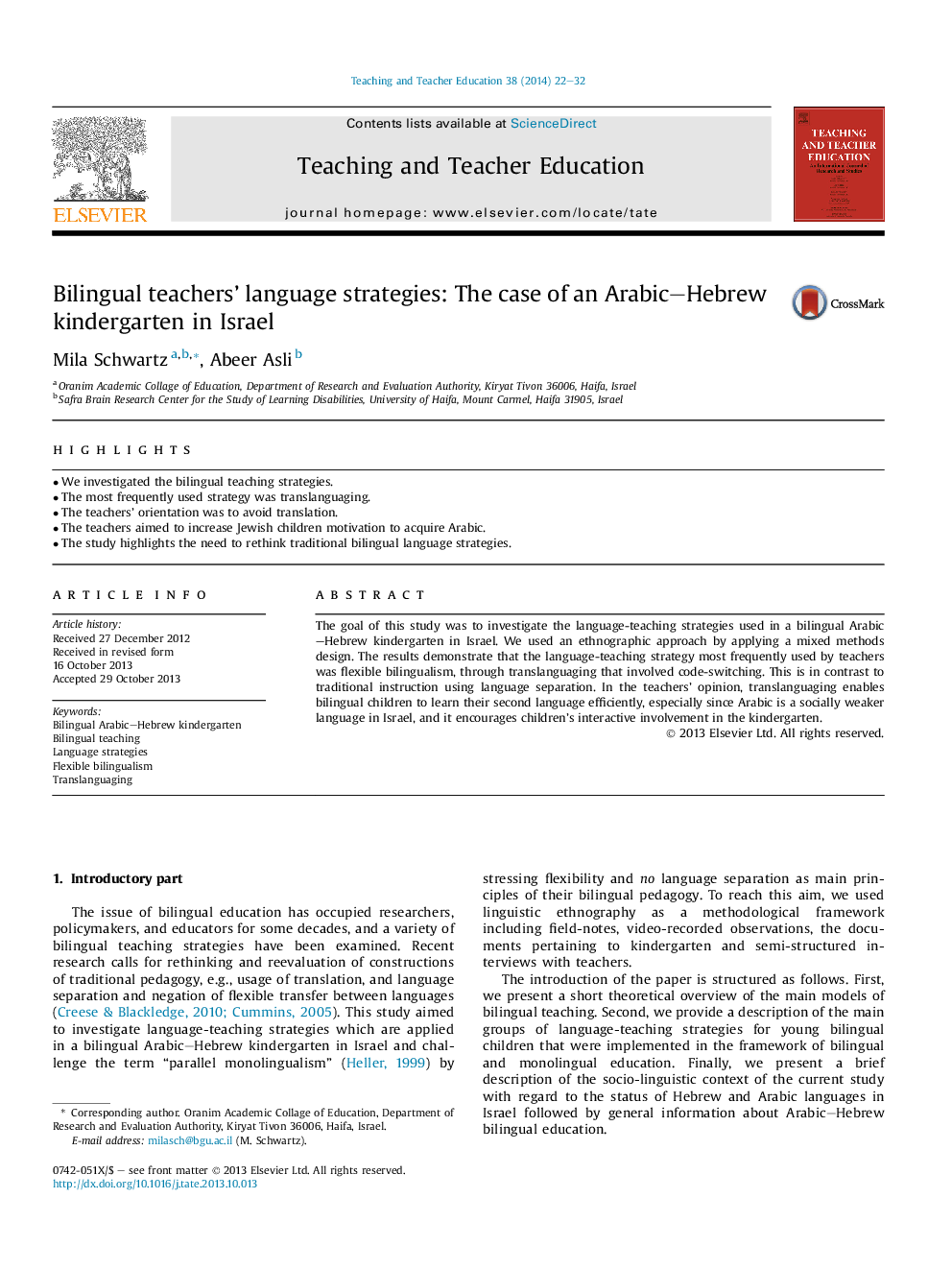| کد مقاله | کد نشریه | سال انتشار | مقاله انگلیسی | نسخه تمام متن |
|---|---|---|---|---|
| 374031 | 622468 | 2014 | 11 صفحه PDF | دانلود رایگان |
• We investigated the bilingual teaching strategies.
• The most frequently used strategy was translanguaging.
• The teachers' orientation was to avoid translation.
• The teachers aimed to increase Jewish children motivation to acquire Arabic.
• The study highlights the need to rethink traditional bilingual language strategies.
The goal of this study was to investigate the language-teaching strategies used in a bilingual Arabic–Hebrew kindergarten in Israel. We used an ethnographic approach by applying a mixed methods design. The results demonstrate that the language-teaching strategy most frequently used by teachers was flexible bilingualism, through translanguaging that involved code-switching. This is in contrast to traditional instruction using language separation. In the teachers' opinion, translanguaging enables bilingual children to learn their second language efficiently, especially since Arabic is a socially weaker language in Israel, and it encourages children's interactive involvement in the kindergarten.
Journal: Teaching and Teacher Education - Volume 38, February 2014, Pages 22–32
